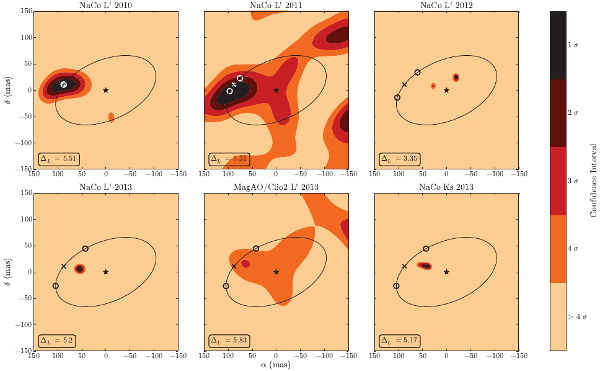
Abstract: We present multi-epoch non-redundant masking observations of the T Cha transition disk, taken at the VLT and Magellan in H, Ks, and L’ bands. T Cha is one of a small number of transition disks that host companion candidates discovered by high-resolution imaging techniques, with a putative companion at a position angle of 78 degrees, separation of 62 mas, and contrast at L’ of 5.1 mag. We find comparable binary parameters in our re-reduction of the initial detection images, and similar parameters in the 2011 L’, 2013 NaCo L’, and 2013 NaCo Ks data sets. We find a close-in companion signal in the 2012 NaCo L’ dataset that cannot be explained by orbital motion, and a non-detection in the 2013 MagAO/Clio2 L’ data. However, Monte-carlo simulations show that the best fits to the 2012 NaCo and 2013 MagAO/Clio2 followup data may be consistent with noise. There is also a significant probability of false non-detections in both of these data sets. We discuss physical scenarios that could cause the best fits, and argue that previous companion and scattering explanations are inconsistent with the results of the much larger dataset presented here.
Sallum, S., et al. “New Spatially Resolved Observations of the T Cha Transition Disk and Constraints on the Previously Claimed Substellar Companion”
ApJ, 801, 85, 2015 arxiv preprint